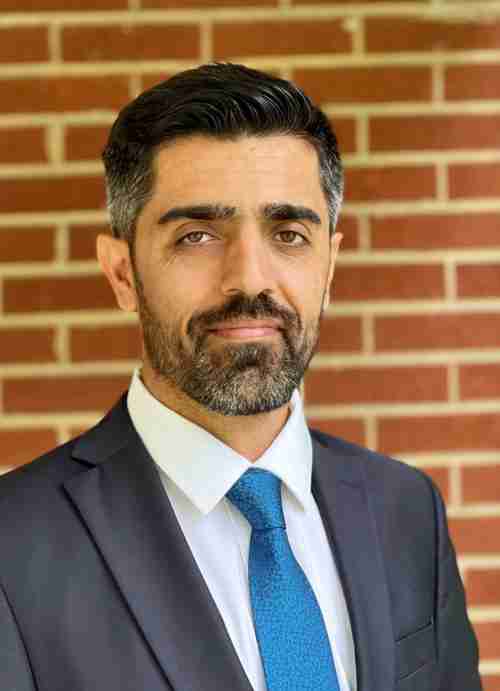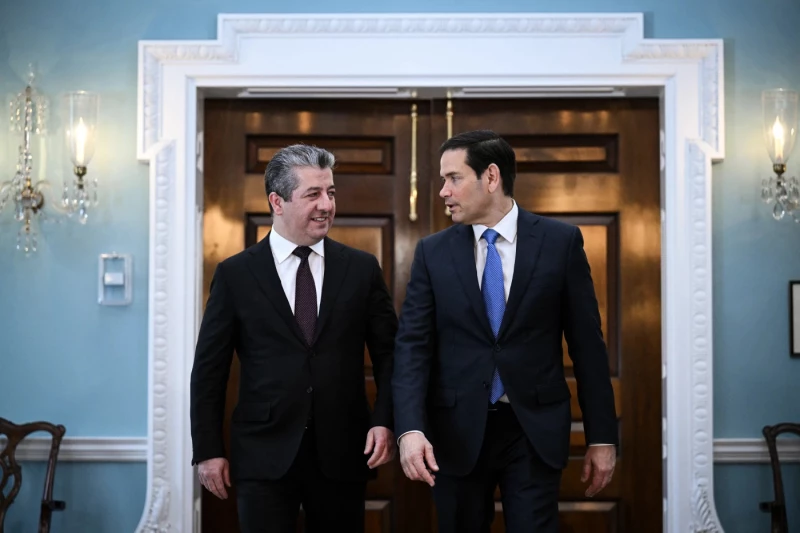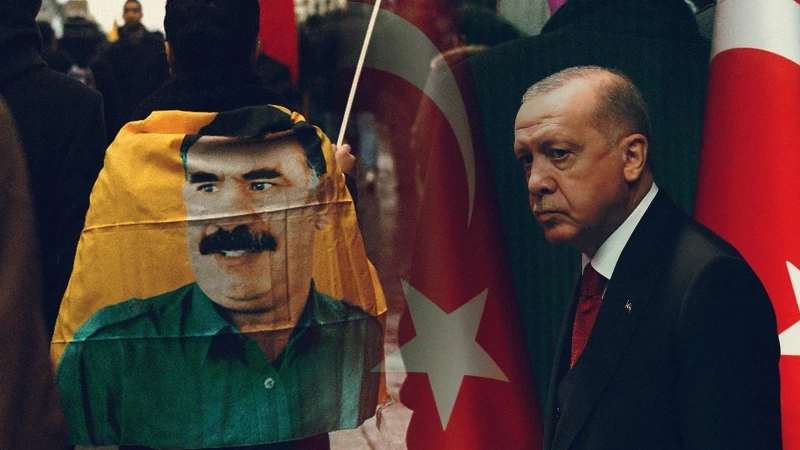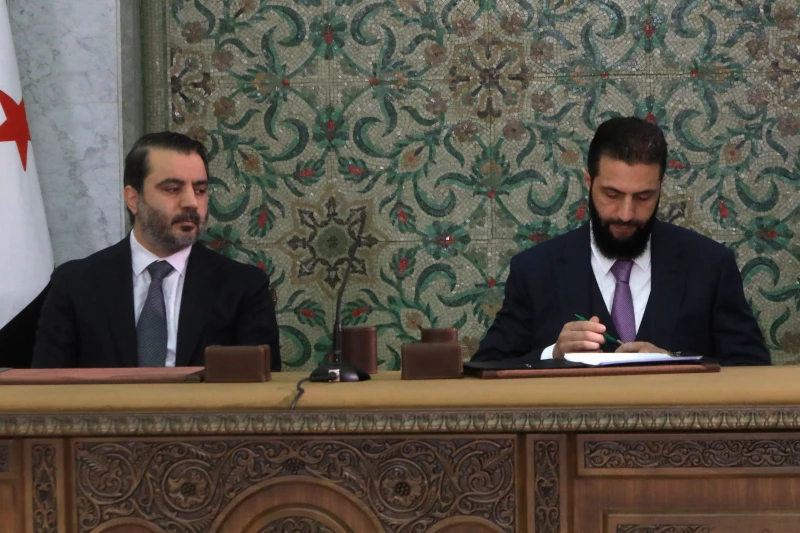The two major Kurdish political blocs in Syria—the Kurdish National Unity Parties (PYNK) and the Kurdish National Council (ENKS or KNC)—gathered for a historic unity conference on 26 April in the city of Qamishli in Syria’s northeast Rojava region. The conference was the culmination of years of intermittent efforts to bridge the divide between the Kurdish factions over the future status and governance of Kurdish-majority areas in Syria. Two earlier agreements, signed in 2014 and 2020, failed to materialize into any lasting framework. This time, the stakes appear to be even higher.
The conference produced a 26-point declaration, setting out a rich and ambitious vision for the future political structure of Syria. The Kurdish sides demanded that Syria be recognized as a "multi-ethnic, multicultural, multi-religious" state that guarantees the rights of all its components, including Arabs, Kurds, Syriacs, Assyrians, Circassians, Turkmen, Alawites, Druze, Yazidis, and Christians. They called for Kurdish-majority areas to be organized as an "integrated political and administrative unit" within "a federal Syria" and for a fair distribution of national resources between the center and the peripheries. The declaration also demanded the recognition of Kurdish as an official language alongside Arabic in Syria, the reversal of the Syrian state's historical policies of Arabization—namely, demographic change and more recent ethnic cleansing—and the granting of citizenship to Kurds, estimated at several hundred thousand, who were unjustly stripped of it during the notorious 1962 census. To achieve these goals, the conference emphasized the necessity of drafting a new Syrian constitution under international supervision.
Several elements of the Kurdish declaration stand out and deserve closer attention. First, the call for an internationally supervised constitutional drafting process reveals deep-seated distrust toward Syria's transitional President Ahmed al-Sharaa and the political forces clustered around him. Sharaa has managed Syria's so-called transition through an opaque and exclusionary process, allowing only token participation from some "independent" figures while consolidating power around his own loyalists. It has become increasingly clear that the "new Syria" under Sharaa looks alarmingly similar to the old one—a centralized, authoritarian structure, as has been the case for most of Syria’s existence as a post-Ottoman state, particularly since its independence.
Second, the Kurdish insistence on federalism as the vehicle for decentralization is significant. The three Kurdish-majority areas in Syria—Jazira, Kobani, and Afrin—are not geographically contiguous. Yet, they are united by a predominantly Kurdish demographic composition, alongside substantial religious minority communities such as Yazidis and Christians. The call for a political and administrative federation reflects deep ethnic and cultural bonds, as well as a clear sense of shared fate among the three regions. Interestingly, the PYNK—an umbrella group largely affiliated with the Syrian Democratic Forces (SDF)—does not typically invoke federalism explicitly in its ideological discourse. Its embrace of the concept at this conference signals a growing urgency among Kurdish political actors about securing meaningful autonomy within Syria’s new political order.
Unsurprisingly, the Syrian presidency quickly responded on April 27 by denouncing the federalism proposal as a "threat to national unity and sovereignty," accusing Kurdish groups of deepening divisions within the country. This reaction was both a logical and political falsehood. Federalism is not separatism; it is a recognized system for decentralizing authority within a unified state. For Syria’s minority and minoritized communities, federalism represents a structural guarantee against the political marginalization and cultural erasure they have endured under successive regimes.
Instead of using the Kurdish proposal as an opening to discuss necessary decentralization reforms, Sharaa’s government chose to slam the door shut. His response underlined a key reality: that the post-Assad regime is less interested in building a genuinely inclusive political system than in restoring centralized dominance, now cloaked in Sunni Islamist robes (much akin to the pre-Assad era). Shortly after the conference, drone attacks—likely by Turkey or Turkish-backed groups—resumed around the Tishrin Dam area in Aleppo province, alongside reports of Damascus dispatching troops to the dam site, signaling both Damascus and Ankara’s concerns over the potential repercussions of the Kurdish move for broader Syria, particularly among other minority communities.
The Kurdish distrust toward Sharaa is deeply rooted in historical and recent experiences. Kurds have been the most oppressed community in post-independence Syria. And as far as the post-Assad order is concerned, Sharaa has reneged on key commitments made in the March 10 agreement with SDF Commander General Mazloum Abdi—a landmark deal that, for the first time, seemed to promise formal recognition of Kurdish existence and rights in Syria. Yet, the transitional constitution unveiled just a few days later made no explicit mention of Kurds, minority communities, or clear guarantees for their cultural identity and rights. Instead, it reaffirmed the "Arab" identity of the state, naming it once again the "Syrian Arab Republic," and infused it with strong (Sunni) Islamist overtones.
This backtracking sent a clear and chilling signal to Syria’s Kurds and other minority communities: the new rulers intend to continue the old politics of exclusion and marginalization. The renewed Kurdish emphasis on federalism and decentralized governance at the recent unity conference reflects a deepening apprehension about Syria’s future under Sharaa’s leadership.
The structural problems that have haunted Syria since its modern creation are reasserting themselves. Syria is a territorial state, not a nation-state. Its borders were drawn by French and British colonial powers after the collapse of the Ottoman Empire, without consideration for the complex ethnic, religious, and communal realities on the ground. Successive rulers—first from Sunni Arab backgrounds, then from Alawite elites—attempted to manufacture a sense of unified national identity centered around Arabism and Islam. Yet, this project was destined to fail because it denied the state’s inherent diversity in a meaningful way.
The Assad regime arguably came closest to establishing a strong Syrian state, but its achievements were built on brutal authoritarianism and sectarian favoritism. Eventually, even that model collapsed under its contradictions, unleashing a decade of devastating civil war.
Today, the Sunni Arab Islamist-dominated regime under Sharaa seems poised to repeat these mistakes, only this time with even narrower ideological foundations, particularly in religious terms. The systematic marginalization of non-Arab, non-Muslim, and non-Sunni communities is likely to accelerate, driving deeper wedges into Syria’s already fragmented society.
Already, the resurgence and continuation of violence against Alawites in western and west-central Syria underscores the dangers ahead for minorities. There is also a frightening mobilization among segments of the Sunni Arab population against the Druze over an alleged insult to Prophet Mohammed by a Druze sheikh—an accusation he has categorically denied. For many of Syria’s minorities, the lesson is now unmistakably clear: without meaningful decentralization and local self-governance, they will remain vulnerable to the tides of religious-ethnic supremacism and extremism sweeping the country. Sharaa’s government has either proven unwilling—or unable—to protect them.
In this context, the Kurdish call for federalism is not merely an expression of political preference; it is a survival strategy. It is a sober recognition of Syria’s political and social realities—and a warning about the price of ignoring them. It has also encouraged other groups to demand a similar arrangement, as evident in remarks by Sheikh Ghazal Ghazal, head of the Alawite Supreme Islamic Council.
If Syria’s leaders continue to pursue a centralized, exclusionary model of governance, they will sow the seeds for future conflicts, fragmentation, and state failure. Instead of imposing a model of ethnic or religious-sectarian supremacy, Sharaa should advocate a meaningfully accommodative vision of political community—one that embraces Syrian patriotism and Syria’s full and rich diversity, rather than Arab-Islamic nationalism. Decentralization, whether in the form of federalism or other models, offers Syria a different path and a real chance—a pluralistic and participatory path that builds a more resilient state from the ground up. Far from threatening Syria’s future, it may be the only thing that can save it in the long run.

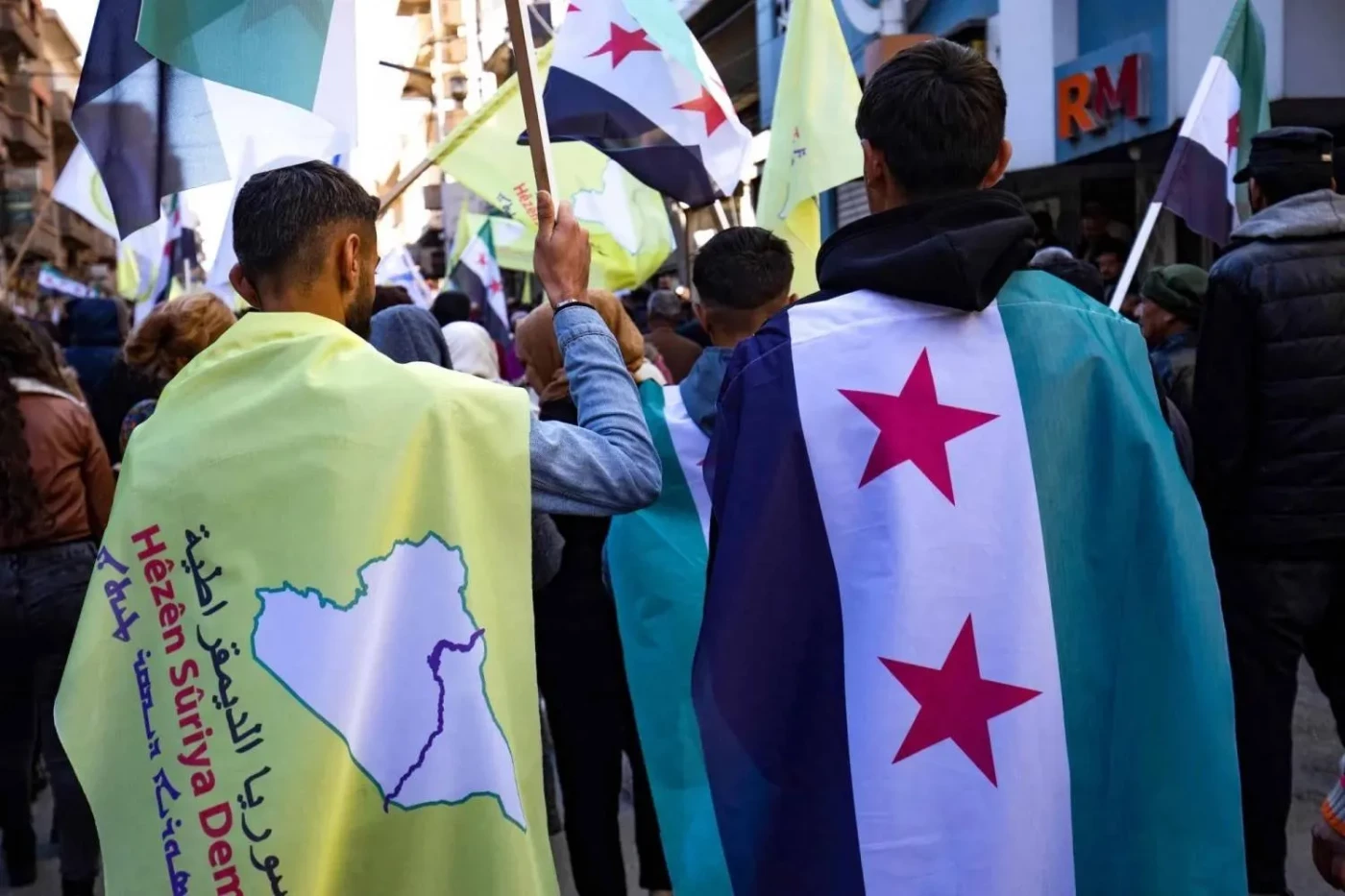
 Facebook
Facebook
 LinkedIn
LinkedIn
 Telegram
Telegram
 X
X
